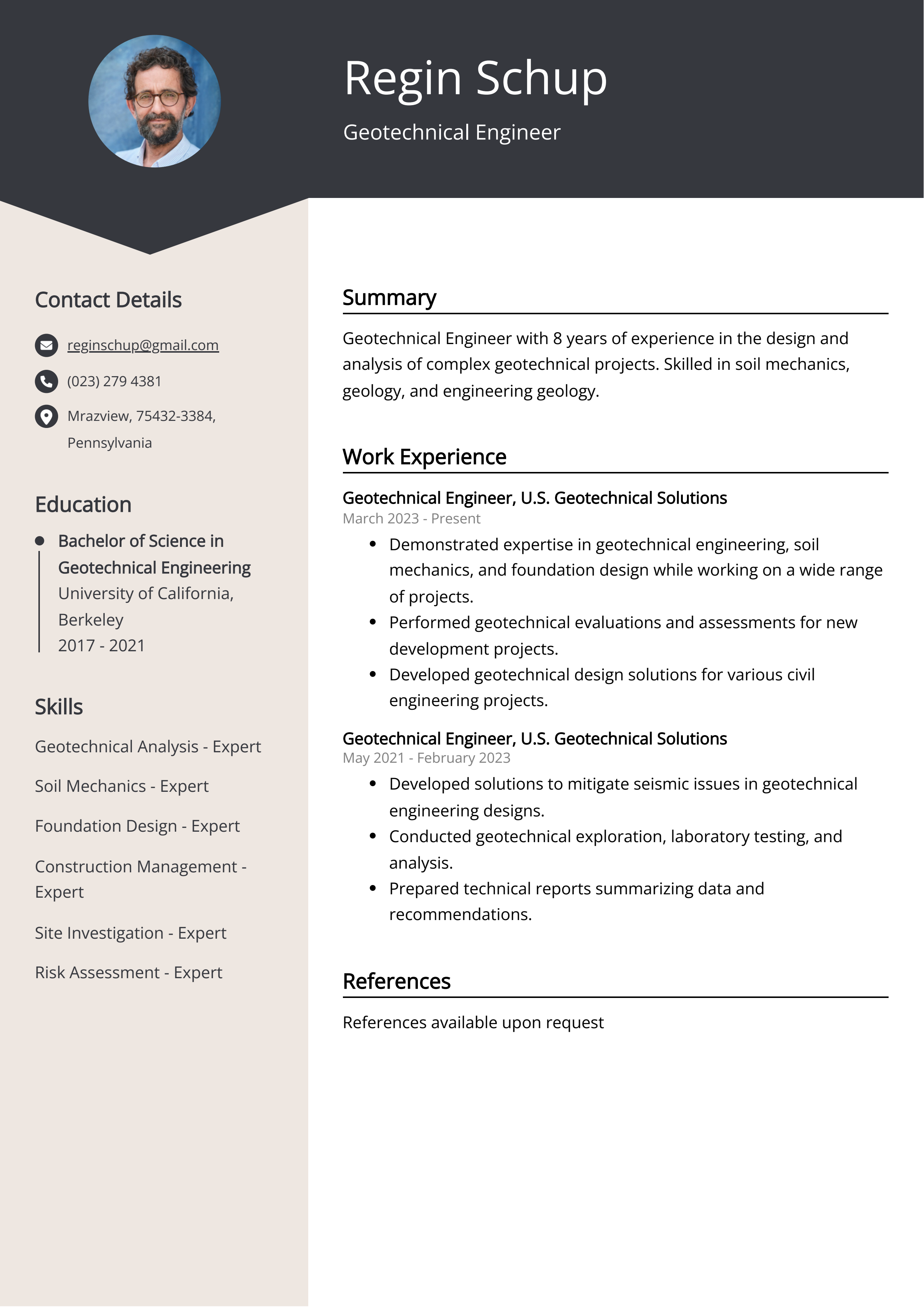6 Simple Techniques For Geotheta
Table of ContentsThe 45-Second Trick For GeothetaAn Unbiased View of GeothetaSome Known Questions About Geotheta.The Of GeothetaGeotheta - Truths

They carry out website investigations, gather examples, perform lab examinations, and analyze information to evaluate the viability of the ground for building and construction tasks - Engineer of Record. Based upon their findings, geotechnical engineers supply referrals for structure design, slope stability, maintaining frameworks, and reduction of geotechnical threats. They work together with other specialists, such as architects, architectural designers, and construction teams, to guarantee that geotechnical factors to consider are incorporated into the total task design and implementation
By examining the behavior and residential or commercial properties of soil and rock, they can identify potential geotechnical risks such as landslides, soil settlement, or incline instability. Their know-how aids stop failings or mishaps that might jeopardize lives and home. Right here are some comprehensive tasks and obligations of a geotechnical engineer: Site Examination: Geotechnical engineers conduct website examinations to collect information on subsurface conditions.
They interpret the data to understand the residential or commercial properties and habits of the dirt and rock, including their stamina, permeability, compaction attributes, and groundwater problems. Geotechnical Evaluation and Layout: Geotechnical designers assess the information accumulated throughout website investigations to assess the stability and suitability of the site for building jobs. They do geotechnical estimations and modeling to examine aspects such as birthing capability, settlement, slope security, side planet stress, and groundwater flow.
The 7-Minute Rule for Geotheta
Foundation Design: Geotechnical designers play an important function in developing structures that can safely sustain the desired framework. They analyze the dirt problems and tons requirements to establish the proper structure kind, such as shallow structures (e.g., footings), deep structures (e.g (https://www.mixcloud.com/geotheta/)., piles), or specialized techniques like soil renovation. They consider aspects such as settlement limitations, bearing capability, and soil-structure communication to create optimum structure layouts
They examine building plans, monitor website activities, and conduct area examinations to confirm that the layout suggestions are followed. If unforeseen geotechnical concerns develop, they evaluate the situation and provide referrals for removal or modifications to the layout. Danger Assessment and Reduction: Geotechnical engineers analyze geotechnical dangers and risks connected with the task website, such as landslides, liquefaction, or dirt disintegration.

Collaboration and Interaction: Geotechnical engineers work very closely with other specialists associated with a project, such as architects, architectural engineers, and construction teams. Reliable communication and partnership are vital to integrate geotechnical considerations right into the overall project style and building and construction procedure. Geotechnical designers provide technical experience, answer queries, and make certain that geotechnical requirements are met.
Getting The Geotheta To Work
Here are some sorts of geotechnical engineers: Structure Engineer: Foundation designers concentrate on designing and analyzing structures for frameworks. They evaluate the dirt conditions, load requirements, and website attributes to identify the most ideal foundation type and design, such as shallow foundations, deep structures, or specialized strategies like heap foundations.
They assess the factors affecting incline security, such as dirt properties, groundwater problems, and slope geometry, and develop approaches to stop incline failings and alleviate risks. Quake Engineer: Quake engineers focus on evaluating and designing frameworks to endure seismic forces. They assess the seismic threat of a website, examine dirt liquefaction possibility, and establish seismic design standards to make certain the safety and resilience of structures during earthquakes.
They carry out field testing, gather samples, and examine the gathered data to define the dirt buildings, geologic developments, and groundwater conditions at a site. Geotechnical Instrumentation Engineer: Geotechnical instrumentation engineers concentrate on surveillance and determining the actions of dirt, rock, and structures. They mount and maintain instrumentation systems that monitor aspects such as dirt settlement, groundwater degrees, slope movements, and architectural variations to assess efficiency and give very early warnings of possible issues.
The 3-Minute Rule for Geotheta
They carry out examinations such as triaxial tests, loan consolidation tests, direct shear examinations, and leaks in the Our site structure tests to gather data for geotechnical evaluation and design. Geosynthetics Designer: Geosynthetics engineers specialize in the layout and application of geosynthetic materials, such as geotextiles, geogrids, and geomembranes. They use these materials to improve soil stability, reinforce slopes, give drain remedies, and control erosion.
They tend to be investigatory individuals, which suggests they're intellectual, introspective, and inquisitive. They are curious, methodical, rational, analytical, and logical. Some of them are additionally social, implying they're kind, generous, cooperative, individual, caring, handy, understanding, skillful, and friendly - Geotechnical Engineers.
In the workplace environment, geotechnical designers use specialized software program tools to execute calculations, produce designs, and evaluate data. They prepare records, evaluation project specs, communicate with clients and group participants, and coordinate job tasks. The office setup gives a conducive atmosphere for study, analysis, and collaboration with other experts entailed in the job.
4 Simple Techniques For Geotheta
They often visit project sites to perform site examinations, examine geotechnical problems, and collect information for evaluation. These brows through involve traveling to various places, occasionally in remote or tough surfaces. Geotechnical engineers might do soil tasting, conduct tests, and screen building and construction activities to ensure that the geotechnical elements of the project are being carried out properly.
Geotechnical engineers also operate in specialized geotechnical laboratories. In these facilities, they carry out experiments, carry out examinations on soil and rock samples, and analyze the design homes of the materials. Geotechnical lab engineers work thoroughly in these settings, managing testing devices, running tools, and taping data. They team up with other research laboratory personnel to make certain exact and trusted testing results.